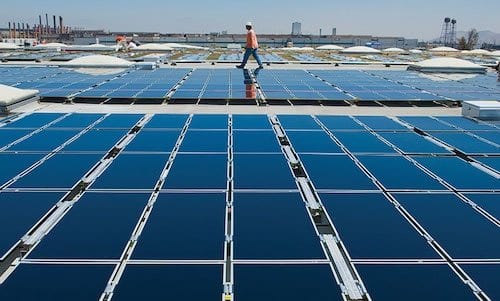 The Australia solar industry says that the federal government should be aiming for a much higher renewable energy target, rather than diluting or removing the current target, to ensure that the inevitable transition to clean energy occurs as quickly and cheaply as possible.
The Australia solar industry says that the federal government should be aiming for a much higher renewable energy target, rather than diluting or removing the current target, to ensure that the inevitable transition to clean energy occurs as quickly and cheaply as possible.
The Australian Photovoltaic Institute says Australia’s renewable energy target should be maintained at its fixed target of 41,000GWh, and future targets of “at least” 30 per cent set for 2030 and “at least” 40 per cent by 2040.
The APVI says Australia’s long-standing RET is one of the few long term market development mechanisms accessible to the renewable energy sector. And, it says, it has met its objectives on time and at a lower cost than originally projected.
“The RET has created a dynamic new industry sector in Australia, with associated training and skills development, particularly in SMEs and in regional areas,” the APVI writes.
“The PV sector alone provides more than 11,000 full-time positions, ranging across the workforce skills set, from world-leading researchers, to engineers, installers, educators, sales staff, transporters and utility personnel, through to financial and legal service providers.
It says the small scale component (SRES) of the RET scheme has successfully delivered some of the lowest cost residential PV systems in the world, again with high uptake in regional areas and in middle and fixed income households. There are now more than 1.3 million solar households in Australia with rooftop solar, and a total of around 3.2GW.
“Renewables need the continued support of the RET because the incumbent fossil fuel-based electricity industry was built by governments or with significant government support and continues to receive substantial annual subsidies,” the APVI writes.
“Likewise the required transition to a more diversified renewable energy based industry also requires government support – and will result in lower cost electricity in the longer term.”
Its conclusions were echoed by the Australian Solar Council, which said total employment numbers, including part time and casual – totalled more than 18,000. It says that 81 per cent of solar firms will sack staff if the RET is axed; and around 60 per cent of solar firms will employ more staff if the RET is maintained.
The ASC warns that the Australian solar market has already contracted 30 per cent following the removal of other incentives, such as feed in tariffs, and so reduced the cost of the RET. But removing the remaining scheme would cause the market to plunge further, falling by 40-50 per cent.
The APVI also proposes a levy – pitched around 0.5 per cent of electricity, gas and fuel sales, to create a Research, Development and Finance Fund that would help maintain and enhance Australia’s world-leading research teams and further development of renewable energy technologies. (This is particularly important since the proposed dismantling of the Australian Renewable Energy Agency, which supported most of Australia’s solar research).
The APVI says separate SRES and LRET schemes should be retained, because of the significant differences in markets, customers and industry players involved, and the need to develop the different technologies, infrastructure and market structures necessary to support central and distributed generation systems.
It also calls for a major restructuring of energy markets, to better manage the transition towards more renewable, decentralised, regional and on-site energy service provision. It says the market has been skewed towards the incumbents. “Renewables need the continued support of the RET because the incumbent fossil fuel-based electricity industry was built by governments or with significant government support and continues to receive substantial annual subsidies,” the APVI writes.
“The increased uptake of distributed energy services is likely to continue over time, driven by a variety of technologies in addition to PV, such as cogeneration, electric vehicles, fuel cells, demand management systems, energy efficiency and various storage technologies.
“These provide a range of services, in addition to energy. Thus, it is imperative that regulatory frameworks be developed as soon as possible so that new business models can emerge to cater for this new market in distributed energy services.
“This would facilitate the establishment of new energy service companies, empower customers to trade on their own energy investments and break the trend to increasing consolidation and reducing competition in the electricity gentailer sector.
“New market structures should include incentives for the grid services PV inverters can provide, including reactive power and voltage support, whilst also creating opportunities for associated storage and load control. “








